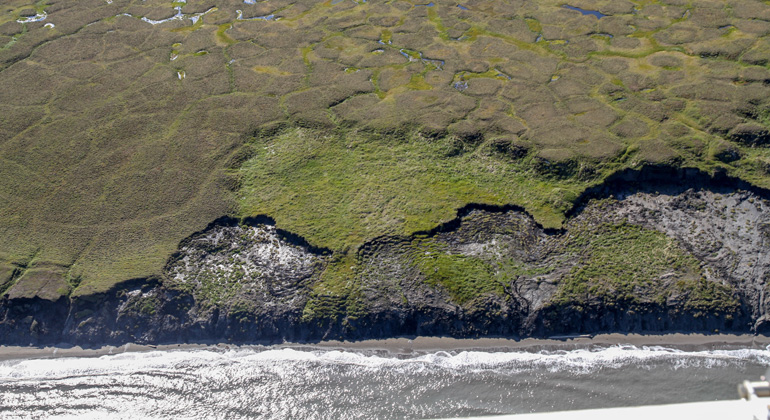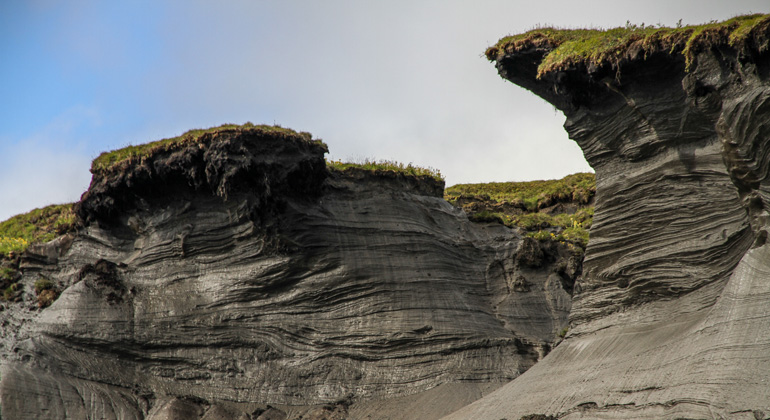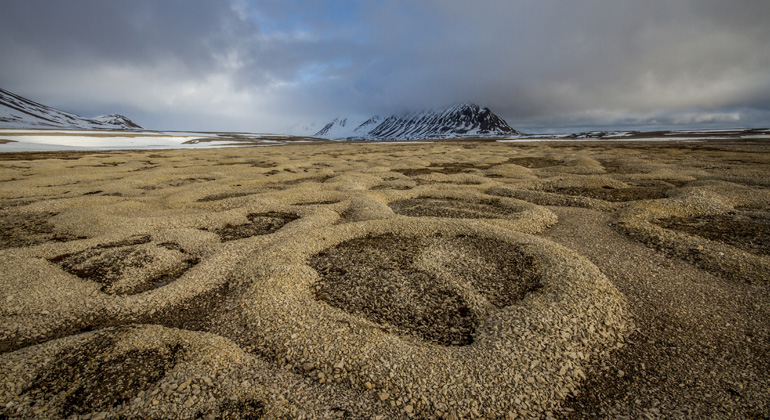Where is the world’s permafrost thawing?
In the Global Terrestrial Network for Permafrost researchers first collect all the existing permafrost temperature and active thickness layer data from Arctic, Antarctic and mountain permafrost regions and then make it freely available for download.
This new portal can serve as an early warning system for researchers and decision-makers around the globe. A detailed description of the data collection is published today in an open access article on the Earth System Science Data portal.
Although the world’s permafrost is one of the most important pieces in Earth’s climate-system puzzle, to date it has been missing in most climate models. The reason: data on temperature and the active layer thickness were neither comprehensive nor were they available in a standard format suitable for modelling. With the new Global Terrestrial Network for Permafrost (GTN-P), scientists from 25 countries have now filled this gap in the data.
“If we want to understand the extent to which climate change is causing the permafrost to thaw and the effect this thawing will in turn have on our climate, we have to closely observe these regions around the globe, and we also have to make our measurements freely available. This can only work if it is based on international cooperation, which we managed to achieve comprehensively for the first time in this project,” explains database initiator Prof. Hugues Lantuit, Permafrost Expert at the Alfred Wegener Institute, Helmholtz Centre for Polar and Marine Research (AWI).
Researchers measured the temperature of the permafrost by boring a hole in the frozen ground, inserting sensors and then reading the data on regular expeditions. “So far our database has brought together measurements from 1074 boreholes, 72 of which are in the Antarctic and 31 in the mountain regions of Europe and Asia. The remaining 961 measuring stations are distributed throughout the Arctic,” says AWI researcher and GTN-P Director Dr Boris Biskaborn.
If you want to find out where the stations are located and what data is available, take a look at the GTN-P world map, where every borehole is marked with a flag. Clicking on the flag gives an instant overview of how cold the ice is below ground at this point and to what depth the ice melts in summer.
Anyone interested in downloading the data only has to register on the database once and agree to the terms and conditions. They then have free access to the time series. “The data is freely available, so that not only academics, but also politicians, officials and other interested parties can access this information and use it as a basis for decision-making. In regions where houses, roads, railways or pipelines are built on thin permafrost, the thawing process can cause severe damage. Here the database can serve as an early warning system,” explains Boris Biskaborn.
International climate research benefits from the database in two ways: “Firstly we’re making global permafrost information available in a standard format, allowing it to be easily used in climate models. At the same time we have also analysed the distribution of the measuring stations using statistical methods and can now say in which permafrost regions new stations for measuring permafrost temperature and active layer thickness are most urgently needed in order to make global climate models more reliable,” stresses Dr Vladimir Romanovsky, the Chair of the GTN-P Executive Committee, Permafrost Researcher at the University of Alaska Fairbanks and co-author of the article published today.
The International GTN-P team enters new temperature and active layer thickness measurements into the database after 12 months from the data acquisition. According to Boris Biskaborn, “This gives all contributing scientists the opportunity to first analyse and publish their results.” Every two years, the GTN-P team will prepare a report on the state of global permafrost, including information on any changes.
The World Meteorological Organization (WMO) recognises permafrost as one of the Essential Climate Variables (ECV). Its long-term survey is organised globally within the Global Terrestrial Network for Permafrost (GTN-P) as part of the Global Climate Observing System (GCOS) in support of the United Nations Framework Convention on Climate Change (UNFCCC). GTN-P has been largely developed due to activity of the International Permafrost Association (IPA).
The GTN-P database is designed and located in the Arctic Portal in Akureyri, Iceland. The data is managed in close cooperation with the GTN-P Secretariat, which is based at the Alfred Wegener Institute’s research centre in Potsdam. The database is currently funded by the European Union (FP7-ENV-2011, Grant Agreement no. 282700) as part of the permafrost research project PAGE21 (www.page21.org).
Original publication
The GTN-P database is available at www.gtnp.org. The GTN-P study will be published on the Earth System Science Data portal on 14th September 2015 under the following title: Biskaborn, B. K., Lanckman, J.-P., Lantuit, H., Elger, K., Streletskiy, D. A., Cable, W. L., and Romanovsky, V. E.: The new database of the Global Terrestrial Network for Permafrost (GTN-P), Earth Syst. Sci. Data, 7, 245-259, doi:10.5194/essd-7-245-2015, 2015.


Source
Alfred Wegener Institute, Helmholtz Centre for Polar and Marine Research (AWI) 2015








